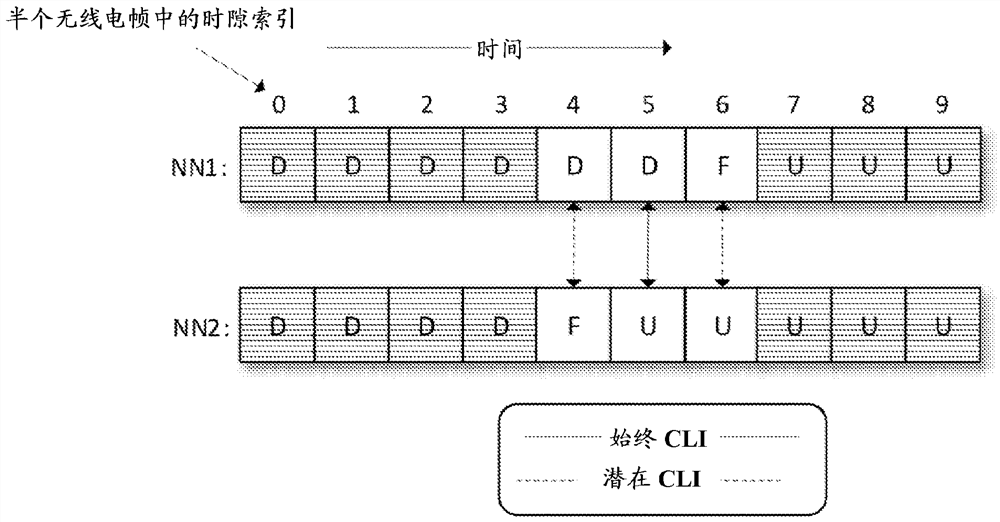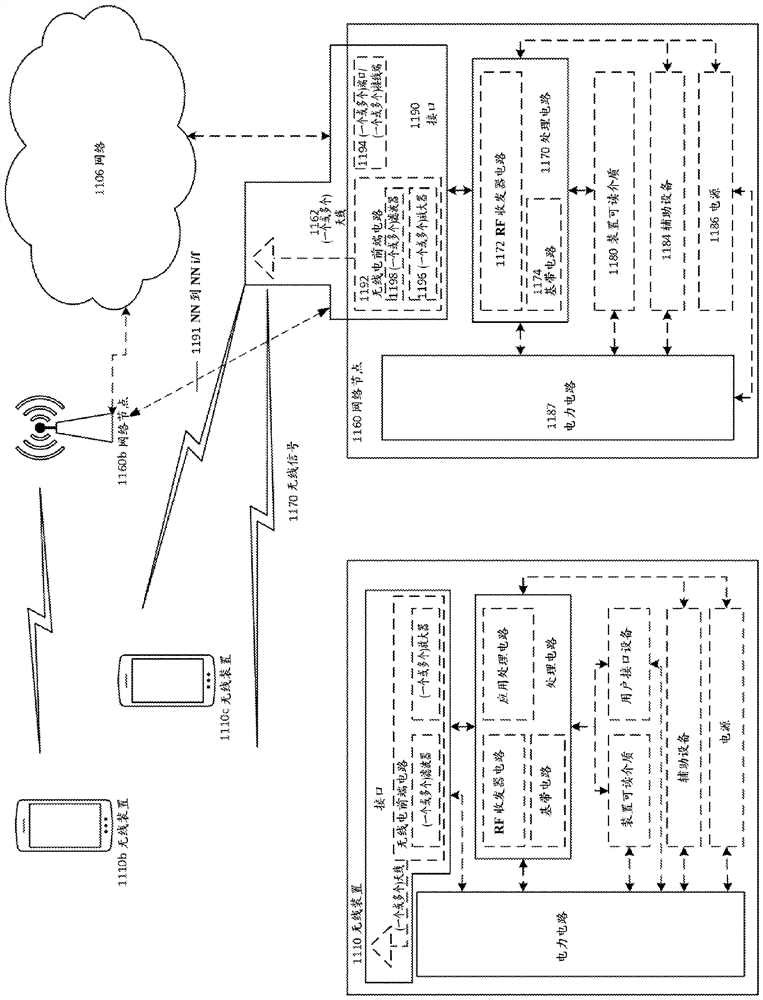Inter-node coordination for cross-link interference management
A cross-link and link technology, which is applied in the directions of multiple use of transmission paths, sub-channel allocation of transmission paths, and digital transmission systems, can solve problems such as infeasibility of dynamic exchange, problematic information availability, and unreliability, and achieve reduction Effect of Backhaul Signaling Overhead
- Summary
- Abstract
- Description
- Claims
- Application Information
AI Technical Summary
Problems solved by technology
Method used
Image
Examples
Embodiment
[0119] Some of the embodiments herein will now be described more fully with reference to the accompanying drawings.
[0120] According to some embodiments, a solution is provided that includes classifying the time resources of a NN or set of NNs into two types: fixed time resources and flexible time resources. This fixed / flexible resource classification is then exchanged between different NNs or different sets of NNs by partially coordinated transmission for CLI mitigation.
[0121] A fixed time resource means that the time resource may change over time, but is not expected to change frequently. Fixed time resources include fixed UL resources available only for UL transmission / reception, fixed DL resources available only for DL transmission / reception, and possibly reserved resources not used for communication. Fixed and flexible resource classification can be done at different granularities such as slot level or symbol level, and can be indicated via backhaul in different w...
PUM
 Login to View More
Login to View More Abstract
Description
Claims
Application Information
 Login to View More
Login to View More - R&D
- Intellectual Property
- Life Sciences
- Materials
- Tech Scout
- Unparalleled Data Quality
- Higher Quality Content
- 60% Fewer Hallucinations
Browse by: Latest US Patents, China's latest patents, Technical Efficacy Thesaurus, Application Domain, Technology Topic, Popular Technical Reports.
© 2025 PatSnap. All rights reserved.Legal|Privacy policy|Modern Slavery Act Transparency Statement|Sitemap|About US| Contact US: help@patsnap.com



